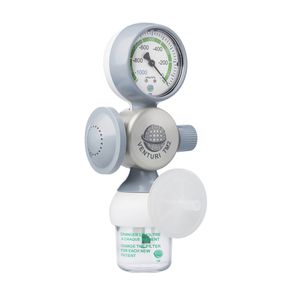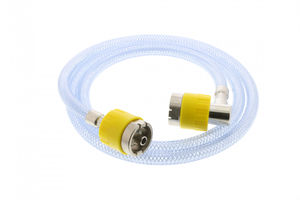
- Medical Technical Facilities
- Hospital infrastructure
- Integrated vacuum regulator
- Technologie Medicale
Integrated vacuum regulator RVTM3surgicaldouble
Add to favorites
Compare this product
Characteristics
- Connection type
- integrated
- Other characteristics
- surgical, double
Description
The vacuum regulator is used to measure and adjust the vacuum level within the context of medical suction. It enables to drain substances out of the patient’s body during surgical procedures. The vacuum regulator should be connected to a vacuum source on the wall either using a direct probe or a rail mounting system. It should be associated with a collection jar and a suction hose.
Continuous vacuum regulator.
Compact, strong and ergonomic device.
Manual adjustment of the vacuum gauge from -45° to +45° for a better visibility.
Vacuum gauge protected by a plastic housing.
ON/OFF switch-button providing a quick restoration of the pre-adjusted vacuum level.
Central regulation knob with a free rotation at the end of the course (impossible blocking).
Quick adjustment: 2.5 turns are enough to reach the maximum vacuum level.
Comfort of use: the needle of the vacuum gauge follows the motion of the control knob, either to increase or to decrease the vacuum level.
Supplied as a standard with a 100 ml safety jar equipped with a mechanical anti-overflow safety valve and a single-use antibacterial plastic filter up-front. Made of polycarbonate, autoclavable up to 134°C and unbreakable, this safety jar does not require any sterilization except in case of accidental liquids’ overflow or perforated filter. Money and time savings are guaranteed!
Catalogs
*Prices are pre-tax. They exclude delivery charges and customs duties and do not include additional charges for installation or activation options. Prices are indicative only and may vary by country, with changes to the cost of raw materials and exchange rates.











